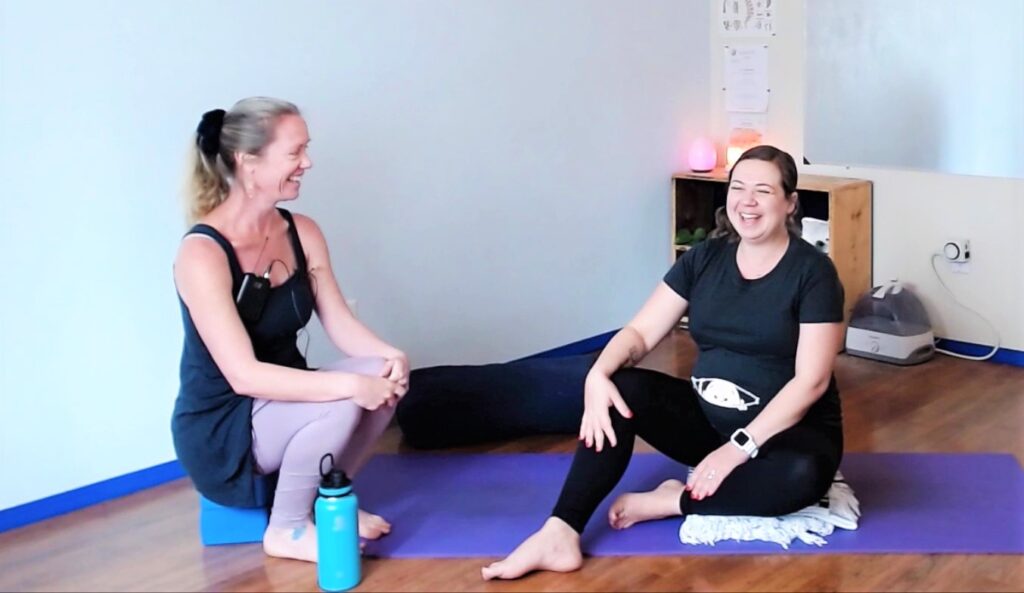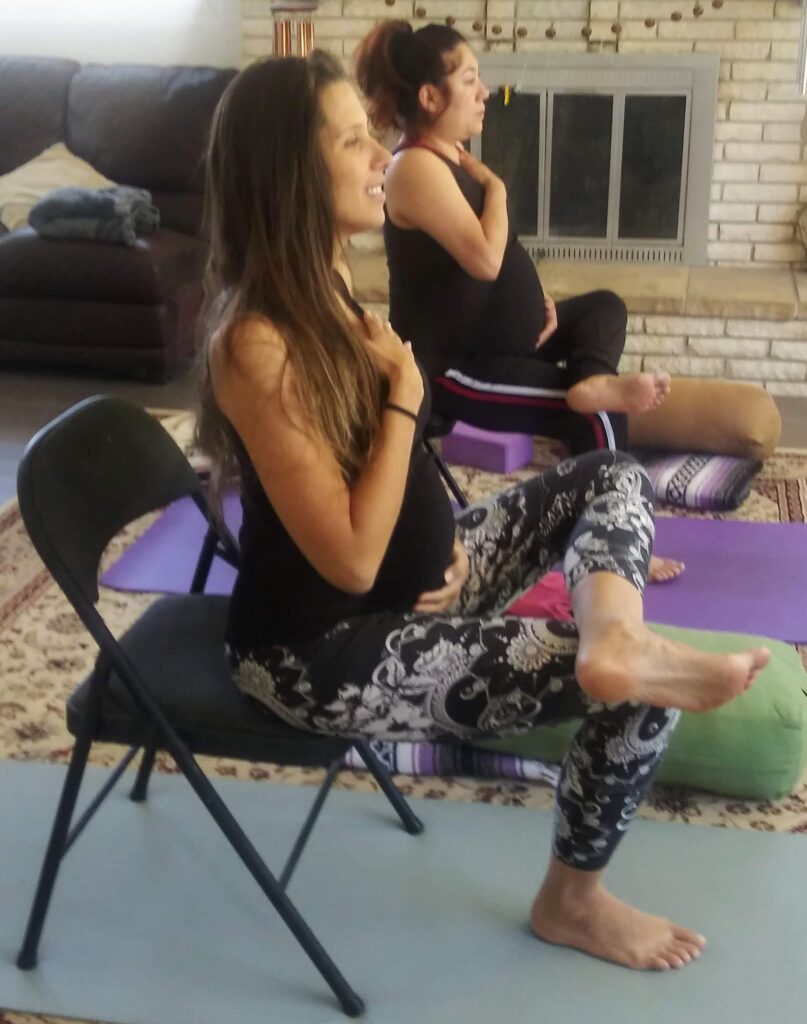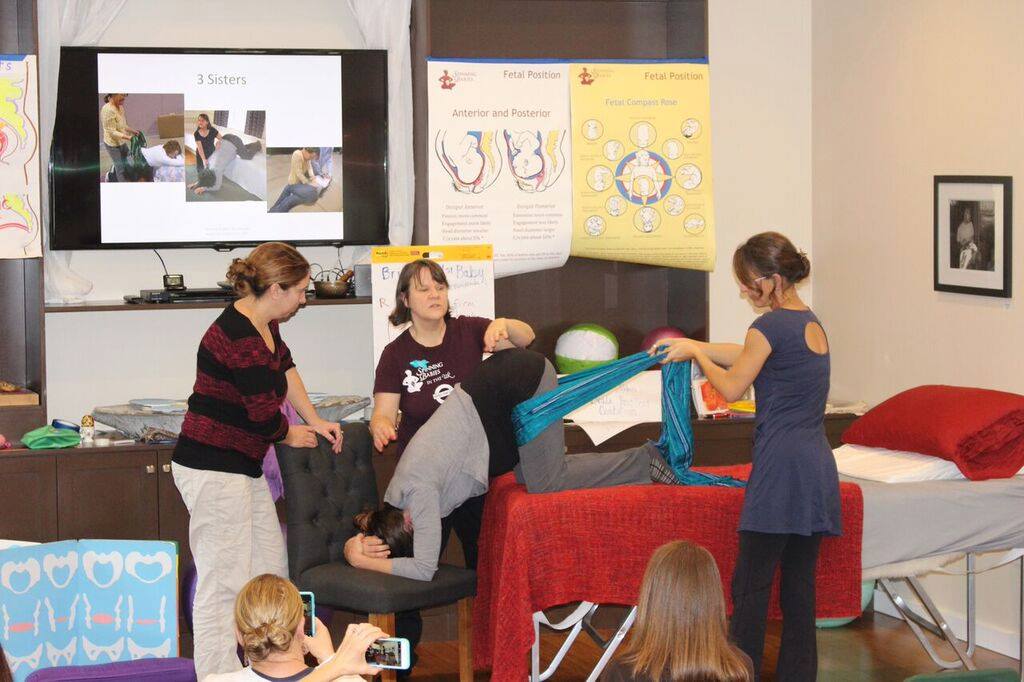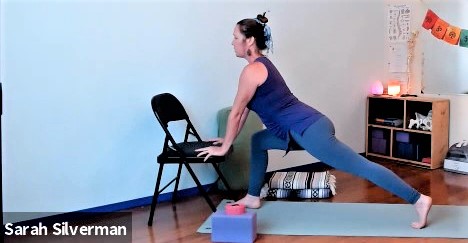
This is Anna. Her baby was in a transverse lie position (sideways), which by most providers necessitates a C-section for safety reasons, up until this past week when he rotated into a head-down position at 36 weeks. Anna was thrilled, because she is hoping to birth her baby without surgery. She believes her baby rotated during or right after prenatal yoga (the day before she’d had an ultrasound that still showed him transverse), during which we’d practiced a balanced session that included many postures to help cultivate mobility in and around the whole pelvis. When a pelvis is mobile, it’s just one more piece of the puzzle that can help a baby move into a space that may propel a labor to go more smoothly and quickly. The baby’s head will be able to move and rotate allowing it to drop deeper into a pelvis (and out!), like a lock finding its way into a key (a Gail Tully analogy).
We do many postures in prenatal yoga to promote balance and mobility in the whole body. These include:
Outer hip-openers like Agnistambhasana (Firelog) variations. My favorite one of these that I recommend daily for most human beings is the accessible variation with one’s buttocks scooched towards the edge of a chair seat (pictured below). Make sure that your weight is tipped towards the fronts of the sitting bones versus towards the tailbone for maximum benefits. Breathe slowly and hold for at least 1 minute on each side.

Inner thigh & pelvic floor softening, which are touched on in many prenatal yoga postures like Parsva Konasana (many great prenatal variations in the Silver Moon Yoga Syllabus of postures), Trikonasana, Baddha Konasana, Malasana, side lunges, and one of my favorites is a passive variation of Upavistha Konasana with the forehead resting on a chair (pictured below). Add in horse lips releasing breath for maximal release in the jaw, tongue, and pelvic region. Sit on enough props so that your weight is slightly tipped forward of the sitting bones. Breathe slowly and hold for 1-3 minutes.

Low back opening and lengthening, which can be accomplished in forwards folds like Paschimottanasana (legs wider apart for pregnancy), Uttanasana (legs wider apart for pregnancy), Tarasana, Adho Mukha Svanasana variations (including using chair & wall), and the Spinning Babies’s Forward Leaning Inversion (pictured below), which also helps release ligaments that connect the uterus to the sacrum = opening the “sacred doors of the pelvis” – Gail Tully. Make sure in seated or standed forward folds that the knees are bent enough to keep the lower back long versus excessively rounding the back.

Thigh and hip flexor stretches like a side-lying thigh stretch, Parsva Konasana, and lunges, which have many variations. I’ve pictured one below using a chair.

In a 1:1 private session, I’d throw in a few minutes per side in the Spinning Babies Side-lying Release as well as their recommended Body or Fascia Jiggling and the Standing Sacral Release.
It’s ideal if any yoga postures are practiced with an experienced prenatal yoga teacher who has a well-trained eye on proper alignment and form for pregnancy. These postures will probably have some element of challenge but should overall feel fantastic and useful to the pregnant practitioner.
Anna has been coming to classes bi-weekly since early on in her pregnancy, and for the past few weeks has been practicing at home some of the things that we do in class like the Forward Leaning Inversion, the chair outer hip-opener, and ball circling. Way to go Anna! You made the space in your uterus for your baby’s head to slide into!
This is Anna’s story, which is not meant to be set as an expectation that these movements will do this for all bodies, but more as a reminder that they can and often do work. Some pregnant people may need to do them way more than another birther. We are all carrying and examining unique body stories.
Founder of Spinning Babies, Gail Tully, says that a head-down position is only half of it. The placement of a baby’s head-down position and whether it will be able to tuck its chin and rotate through the pelvis is another huge and nuanced factor in the birthing equation. Another factor is that there are many variations of pelvic shapes which combine in unique ways that make no pelvis exactly like another one. The most predominant variations lie in the shape of the pelvic inlet, which means that each baby will have its unique journey of moving or engaging in the pelvis. A mobile pelvis will allow babies to move and spin as they need to to make their way through the pelvis and into the birthing canal and out into the world. I hear many people saying things like, “I’m all set; my baby is in a head-down position, so I’m ready for labor!” I absolutely love this confidence, but where it’s appropriate I try to encourage pregnant yogis to keep moving and opening and coming to yoga as long as it’s still feeling supportive. The baby’s journey has only just begun!
Therefore, the fusion of prenatal yoga that I usually teach is not only intended for those attempting to turn their baby from a breech position. It’s also great to encourage a nice head positioning once a baby is already head-down. Above all, I encourage pregnant yogis to move in ways that feel nice and that align with their body’s wisdom and intuition. Birthers often can feel what types of movement are beneficial to them when given the space to explore, listen, and feel.
I combine yoga concepts of safe alignment and form, restful and relaxing postures, and breath awareness practices with some Spinning Babies theory in my classes and private sessions. Beginning yoga before pregnancy is ideal, but if you’ve already passed that, come as soon as you’re feeling up to it.
The Spinning Babies website offers great step-by-step instructions on how to do many of their recommended exercises.
I hope to see you in class! It meets in-person and virtually.

